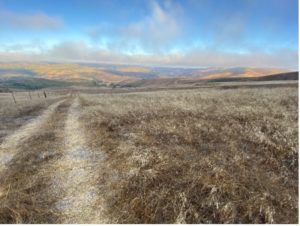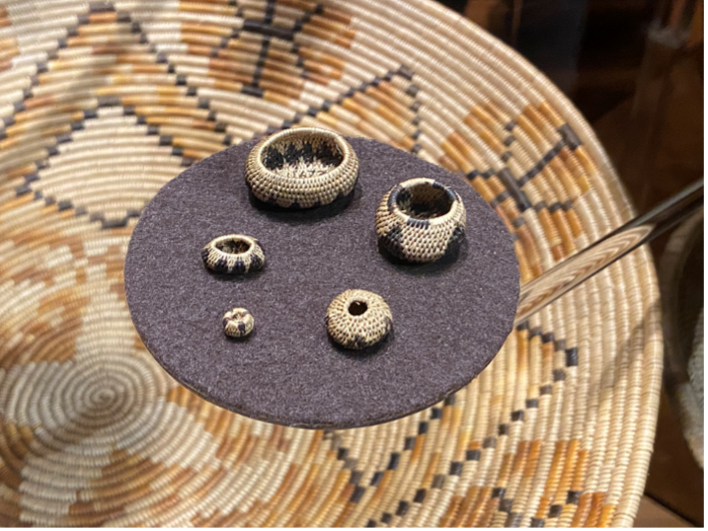by Phillip Mendenhall
On archaeological excavations we typically remove overlying vegetation as part of the process of looking for evidence of the past below ground. However, while on an excavation of a prehistoric lithic quarry near the southern California coast this past August, I was reminded of how much knowledge can be observed by orienting oneself in the surrounding landscape.
Anyone who visits the interior corridors of Alcoa Hall will find themselves confronted by the central displays of grass-weaved baskets obtained from the throughout the US. If someone looks closely enough in the California Basket case, they will see five baskets that measure no larger than a person’s thumbnail. These tiny specimens made sometime before 1938 near Pomo, California, were never meant to be used in any practical way, but were rather meant to display the mastery of the artisan that created them. Without the use of mechanical aids or lenses, the rough, sea-weathered grasses of the central California coast were meticulously threaded with exact precision into a near-microscopic version of their functional counterparts. Motifs that emulate the larger versions are still visible and thoughtfully organized as if they were a hundred times greater than their actual size, a remarkable demonstration of skill that dates back at least 2,000 years in the region.
Baskets, due to their organic components, rarely survive in the archaeological record. We archaeologists are forced underground to look for more tangible artifacts, such as stone tools and pottery to understand past lifeways. This can cause bias in what we believe a group of people used as resources because only a few types of durable artifacts survive from so long ago. However, as many of the Chumash people that I worked with this summer will explain, we who seek to understand better what has happened in the past have only just touched the surface of what lies hidden from our knowledge.
Phillip Mendenhall is a member of the Cherokee Nation of Oklahoma, a PhD candidate in anthropology at the University of Pittsburgh, and an interpreter at Carnegie Museum of Natural History. His work in North America and southeastern Europe focuses on how native cultures persist in the face of cultural change and colonization.
Related Content
Celebrating Indigenous Peoples’ Day
An Indigenous Presence: Cultural Survivance and Contemporary American Indian Art and Design
Where the Heck Did That Come From?
Carnegie Museum of Natural History Blog Citation Information
Blog author: Mendenhall, PhillipPublication date: October 14, 2021


